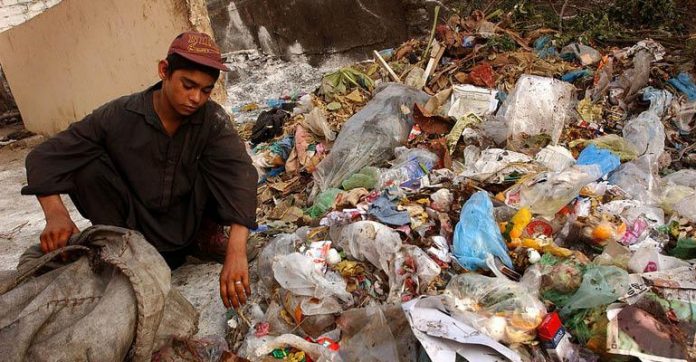ISLAMABAD: The government, as part of achieving its goal to eliminate poverty by 2030, has prioritised 17 pro-poor sectors through Medium Term Expenditure Framework (MTEF), which provides a link between policy priorities and related budget allocations.
The expenditure on pro-poor sectors in 2012-13 stood at 8.5 per cent of Gross Domestic product (GDP) in 2013-14, these were 7.7pc of GDP and in 2014-15 it was 8.3pc of GDP.
However, during 2015-16, total expenditures of these sectors were increased and reached 2,694.67 billion, which was 9.3pc of GDP.
Similarly, during first six months (July-December) of current fiscal year 2016-17, Rs. 1017.5bn expenditures have been made in sectors including roads, highways and bridges, environment, water supply and sanitation, education, health, population planning, social security, natural calamities and other disasters.
Official sources on Thursday said Ministry of Planning, Development and Reforms in collaboration with concerned Provincial Departments and United Nations Development Programme (UNDP) had carried out an extensive series of divisional level workshops to sensitise about Sustainable Development Goals (SDGs) at grassroots level and also disseminated findings of Multi-dimensional Poverty Index report.
Emphasis has been placed on orientation at grassroots level, localisation of SDGs, prioritisation of SDGs and data gap analysis for proper monitoring and reporting.
Planning Commission in collaboration with UNDP and Pakistan Bureau of Statistics (PBS) has also conducted an extensive exercise to review availability of data on SDGs from various sources and timelines.
The sources said a Technical Committee is formulated to review availability of data to monitor progress on 241 indicators and its alignment with SDGs framework.
This Committee is assisted by four sub-committees by clubbing 17 goals in four broad categories.
The goal is ‘No Poverty’ in all its manifestations everywhere by 2030. Although, this is in complete consonance with Vision 2025 — ‘No one left behind’ but at the same time it poses challenges of eradicating poverty in all its dimensions and from all parts.
The report on Multi-dimensional Poverty 2016 and PSLM data provides a deep insight on state of poverty and dynamics in Pakistan.
This poverty profile revealed that, in Pakistan poor are pre-dominantly rural, young, poorly educated, mostly deprived of health facilities, and are living in larger households with more children.
These characteristics of poor and poverty help policy makers in formulating purposeful and targeted poverty alleviation programmes.
The government has initiated social sectors programmes and policies to improve Human Development Index.




